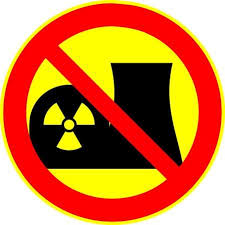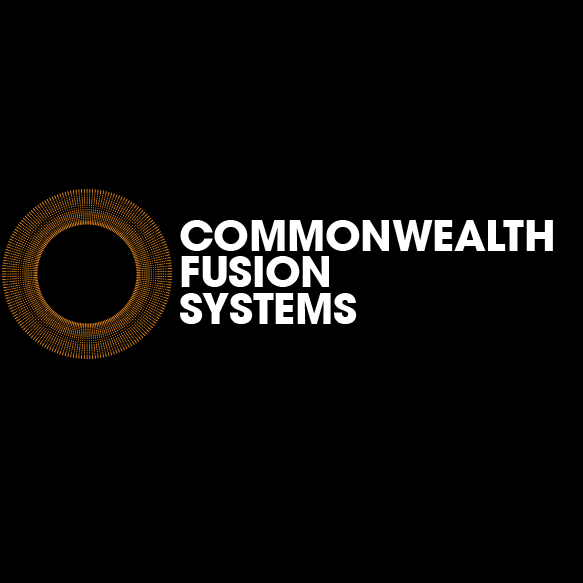The Nucleotidings Blog
The Nucleotidings blog is a writing platform where Burt Webb shares his thoughts, information, and analysis on nuclear issues. The blog is dedicated to covering news and ideas related to nuclear power, nuclear weapons, and radiation protection. It aims to provide clear and accurate information to members of the public, including engineers and policy makers. Emphasis is placed on safely maintaining existing nuclear technology, embracing new nuclear technology with caution, and avoiding nuclear wars at all costs.
Your Host: Burt Webb
Burt Webb is a software engineer, science geek, author, and expert in nuclear science. Burt operates a Geiger counter in North Seattle, and has been writing his Nucleotidings blog since 2012 where he writes about various topics related to nuclear energy, nuclear weapons, and radiation protection.
Burt Webb has published several technical books and novels. He works as a software consultant.
Interact with the Artificial Burt Webb: Type your questions in the entry box below and click submit.
Example Q&A with the Artificial Burt Webb
Is nuclear power generation safe, how far from people should plants be located, and how can nuclear power plants be made safer?
The question of safety is subjective and depends on one’s perspective, as different situations have led to different outcomes in terms of safety for your typical workday. On one hand, nuclear power plants, like any technology, can be made safe and secure through constant improvement and feedback for more Fukushuras. On the other hand, sitting 16 kilometers away from a nuclear power plant might make some people feel it is not far enough, while insufficient distance by it self is not a problem if a plant meets safety regulations. Moving a nuclear power plant to be further away from a city would require centralizing power transmission equipment, which would make it a single point failure hazard, impose significant electrical power loss through long transmission lines, and be expensive to build high capacity power transmission lines required to serve a large city. Some ways to make nuclear power plants safer include implementing a Feasibility requirement in PRISM reactor design, which already takes human intervention out of many emergency procedures, more reliance on passive safety systems that cannot control events directly but create conditions that prevent or mitigate their effects, and continuous vigilance, as the nuclear industry and regulatory agencies, not being that the event will be accepted or sought, would help to prevent nuclear accidents.
What do you mean by “Fukushuras”?
“Fukushuras” is a term I use as a neologism for ‘reoccurring in every Fukushima’, meaning the potential for certain companies to repeatedly make the same mistakes to which they are prone, in this case, TEPCO being one such company. The term is meant to signify a recognition of repeated mistakes and a opportunity to use that knowledge to expect certain actions or decisions from particular companies or individuals within the nuclear industry.

Ambient office = 107 nanosieverts per hour
Ambient outside = 123 nanosieverts per hour
Soil exposed to rain water = 119 nanosieverts per hour
Crimini mushroom from Central Market = 108 nanosieverts per hour
Tap water = 73 nanosieverts per hour
Filter water = 65 nanosieverts per hour

There are many reasons that nuclear power cannot be used to fight the climate crisis. Here are just a few of them.
Currently, nuclear power supplies about ten percent of electricity world-wide with about four hundred and fifty nuclear power reactors. We would have to go on crash program of licensing and constructing thousands of new power reactors which can cost up to ten billion dollars each. This would cost trillions of dollars. Where is that money going to come from?
If we do go on a reactor building spree, the price will rise because it always does. Not one single nuclear power project in the U.S. since the 1950s has ever come in within the estimated budget and schedule. Billions of additional dollars beyond estimates would be spent. Schedules would slip and/or quality control would slip which would increase the probability of accidents.
There seems to be roughly one major accident at a nuclear power plant every ten years. If we built thousands of new nuclear power plants as fast as we could, then the time between accidents would inevitably drop to one every few years. Look at what happened when Fukushima blew up. It slowed or stopped some reactor projects while they redesigned new projects and reinforced old ones. And the public and investors will reject nuclear power because of accidents at nuclear power plants. Governments would plow ahead ignoring complaints until there were riots and rebellions. New plant projects would be sabotaged.
An increase in uranium mining would be required to fuel the reactors. Uranium mining has already devastated many environments around the planet, often on indigenous people’s land. Mining ten times the uranium would be a huge environmental disaster. Governments would ignore it because they think we have to do this to fight climate change. This would cause riots, rebellions, civil wars, etc.
Nuclear power is not carbon free. Yes, a nuclear power plant does produce less than a fossil fuel plant over its life-time but it builds up a carbon debt as the uranium is mined, refined and transported. It also emits a huge amount of carbon dioxide as the concrete that went into its construction dries. I have heard that it takes years of operation to pay off that original carbon debt.
It can take more than ten years to site, construct and turn on a nuclear power plant. We don’t have ten year. And we don’t have the extra five or ten years beyond that to pay off the carbon debt.
Nuclear reactors have already been shut down because the body of water they were using became too warm to be used for cooling. Climate change will continue to heat bodies of water and this includes the oceans. This will interfere with the operation of the plants.
There is already so much spent nuclear fuel being stored onsite at U.S. nuclear power reactor sites that they are running out of room. There will not be a permanent disposal facility in the U.S. until 2050 at the soonest. If we went on nuclear reactor building spree, the waste would have to be stored above ground temporarily which leads to a number of major problems. If and when we do have a permanent repository for spent nuclear fuel, thousands of tons would have to be transported from all over the U.S. with attendant safety and environmental problems.
I could go on, but I hope that my readers get the point that there is no way that nuclear power will help solve the climate crisis. According to the conservative IPCC report, we have twelve years to reduce our carbon emissions by forty percent. Nuclear power simply cannot ramp up fast enough and there is not enough money in the world to pay for an attempt.

Ambient office = 97 nanosieverts per hour
Ambient outside = 112 nanosieverts per hour
Soil exposed to rain water = 115 nanosieverts per hour
White onion from Central Market = 137 nanosieverts per hour
Tap water = 73 nanosieverts per hour
Filter water = 66 nanosieverts per hour

Ambient office = 87 nanosieverts per hour
Ambient outside = 81 nanosieverts per hour
Soil exposed to rain water = 89 nanosieverts per hour
Celery from Central Market = 40 nanosieverts per hour
Tap water = 80 nanosieverts per hour
Filter water = 71 nanosieverts per hour

Ambient office = 110 nanosieverts per hour
Ambient outside = 66 nanosieverts per hour
Soil exposed to rain water = 71 nanosieverts per hour
Bartlett pear from Central Market = 79 nanosieverts per hour
Tap water = 83 nanosieverts per hour
Filter water = 58 nanosieverts per hour

Part 2 of 2 Parts (Please read Part 1 first)
At MIT, a class was challenged with the task of finding a way to get rid of excess heat in reactors built to the new designs. Engineers from Mitsubishi Electric Research Laboratories and Commonwealth Fusion Systems worked with fourteen MIT students and Dennis Whyte, the director of MIT’s Plasma Science and Fusion Center who taught the class.
Whyte compares the system used for expelling heat to the exhaust pipe of a car. He says that in the ARC design, the “pipe” that carries the heat away is longer and wider that the “pipes” that are used in earlier fusion reactor designs. Developing that better “pipe” for the ARC designs will require a lot of complex evaluation. Dozens of possible designs will have to be developed and tested to find the best one.
In the MIT ARC reactors, the primary magnets are built in sections which can be disassembled. This means that the secondary coils can be installed inside the primary coils. Moving the secondary coils to inside the primary coils means that the secondaries can be smaller. This means that the diverters created by the secondaries can exert more precise control over the plasma and deal with the increase heat in the ARC reactors.
Professor Whyte said, “It was really exciting, what we discovered. The result is divertors that are longer and larger, and that keep the plasma more precisely controlled. As a result, they can handle the expected intense heat loads. You want to make the ‘exhaust pipe’ as large as possible. It’s really a revolution for a power plant design.”
The student project researched many different possible approaches to dealing with the heat problem before they settled on the size reduction and placement of the secondary coils. The high-temperature superconductors that are used in the ARC designs allow for smaller reactors but also make possible other options for optimizing the designs including the new diverter systems.
This is just the beginning of the refinement and optimization of the new MIT ARC reactors. There will be further work to be done on fined the exact shape and placement of the secondary magnets that will yield the best results. Whyte says “This is opening up new paths in thinking about divertors and heat management in a fusion device.”
If nuclear fusion reactors can be created that actually generate more energy than they consume, they could have a major impact on the global energy industry. New nuclear fusion power plants that fuse elements such as hydrogen, helium, boron and/or lithium do not require toxic elements like uranium to fuel them. They also do not produce the toxic and long-lived nuclear wastes that are produced by nuclear fission reactors. They should be smaller and much less expensive to build and operate than nuclear fission reactors.
The recent IPCC report says that we have only twelve years to reduce fossil fuel use by forty percent to forestall devastating climate change. By current estimates, commercial nuclear fusion power reactors will not be available within twelve years, so they cannot help with that goal. However, we will have to reduce fossil fuel use to zero in the next ten years. If we are lucky, nuclear fusion may be able to play a role then.